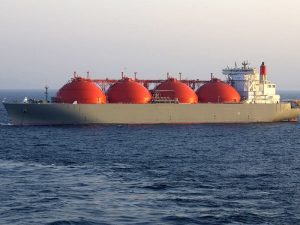What you will learn from this article
Modelling the economic impacts of climate change is exceptionally difficult and right now there is not even a half way reliable estimate. As the reality of climate change becomes more obvious, the need to understand the economic consequences increases. Still for the time being it’s the environmental consequences that are easier to see, while the economic impacts of those environmental shifts are very difficult – if not impossible – to model.
Many climate changes may bring benefits as well as costs if the climate change is of just the right size. A oft-cited example of a “benefit” would be melting arctic ice enabling lower shipping costs between Asia and the USA, for instance.
The current tool of choice for measuring the costs of carbon emissions is the Social Cost of Carbon (SCC). Despite the fact that both the model specification and the parameter estimate have neither a good theoretical or realistic basis, the use of the SCC has been upheld by a Minnesota Administrative Law Judge, in a contested case.
Although evidence of the environmental impacts of small amounts of global warming is starting to accumulate and become evident to the man on the street, economists will still want to assess the costs of decarbonisation against the costs of global warming. In our view, this is the emerging frontier of research in the climate change debate. The faster we decarbonize the greater the investment cost, the slower we decarbonize the greater the warming with important, but still poorly understood long-term consequences. If the Greenland ice sheet is going to melt in 1000 years, raising sea levels by 6 metres, how should we measure the cost of that today?
A more accurate estimate of the Social cost of carbon would be great, but it’s unlikely
Despite a reputation for preferring the lab or computer to the “real world,” scientists have arguably done quite a good job of convincing society that climate change is for real. Surveys show a majority of people accept climate change. The more you know about it the more real it is, with 97 per cent of scientists who work in the area famously reporting their acceptance of the theory and reality.
It’s a difficult job, because science is selling the need for major change. According to a survey by CarbonBrief the most influential paper in the literature is “Thermal Equilibrium of the Atmosphere with a Given Distribution of Relative Humidity” by Manabe and Wetherald. This was published in 1967 and will be 50 years old next year. Over those decades we have got to the point where, globally, scientists, governments and the population basically “subscribe,” to a greater or lesser extent, to the theory and reality of global warming.
So in this author’s view we have moved on from the idea that global warming is happening, to trying to understand the costs and consequences. Almost inevitably as we move from a physical science discussion to an economic and social conversation the conversation gets way harder.
The COP [conference of parties] has asked the IPCC to prepare a special report on “the impacts of global warming of 1.5 oC above pre-industrial levels and related global GHG emission pathways.” The outline of the special report will be considered at the 44th Session of the IPCC in October 2016. The final draft will be considered by the Panel for approval at its Plenary session in September 2018.
The IPCC 5th report from 2014 had this to say:
“Aggregate economic losses accelerate with increasing temperature (limited evidence, high agreement), but global economic impacts from climate change are currently difficult to estimate. With recognized limitations, the existing incomplete estimates of global annual economic losses for warming of ~2.5°C above pre-industrial levels are 0.2 to 2.0% of income (medium evidence, medium agreement). Changes in population, age structure, income, technology, relative prices, lifestyle, regulation and governance are projected to have relatively larger impacts than climate change, for most economic sectors (medium evidence, high agreement). More severe and/or frequent weather hazards are projected to increase disaster-related losses and loss variability, posing challenges for affordable insurance, particularly in developing countries. International dimensions such as trade and relations among states are also important for understanding the risks of climate change at regional scales”. IPCC5, synthesis report p73
That said, the IPCC report also notes that the Greenland Ice Sheet is in danger of melting (over 1000 years) causing a 7 metre rise in sea levels. Warming effects continue beyond 2100. By comparison most of the models suggest that by 2100 sea levels will have risen about 0.5 metres.
The point here is to be neither alarmist or cavalier in regard to the issue. The point is that this is, in our view, both the frontier for research and illustrative of the difficulty in determining the appropriate economic response.
The social cost of carbon [SCC]
At the moment the prevailing way of measuring the economic impact of each additional ton of CO2 emitted is by the SCC. This attempts to measure the total amount of economic losses from global warming no matter when they ocurr and then discounts those losses back today’s value using traditional discounting techniques.
At the moment the most widely quoted estimate of the SCC is from the USA EPA,
The table below shows the EPA estimates, however that table only shows the discount rate sensitivity, which is big enough, and has nothing in itself to say about underlying specification of the model generating the losses.
These numbers are drawn from an equally weighted average of the results from “integrated assessment models” [IAM].
A useful discussion of the strengths and many weaknesses of the IAMs was provided by Roberty Pindyck, then an economist with the US National Bureau of Economic Research, and published in the Journal of Economic Literature in 2013. For anyone interested in the economics problem, it’s a great read: Pindyck analysis of SCC.
Pindyck is very critical of the SCC process but still comes to the conclusion that we need a cost on carbon. One of his big and seemingly valid criticisms is that the SCC does not incorporate to any extent the low probability but very high economic impact of catastrophic climate change (ie Greenland Ice sheet melting). He also points to some studies which find evidence of negative impacts on GDP growth already existing for some countries from higher temperatures.
He described the IAM process as .
1 Project emissions
2 Project atmostpheric concenterations
3 Project temperature, sea level and “weather” related changes
4 Project economic impacts
5 estimate abatement costs
6 Estimate the discount rate from assumptions about social utility and the rate of time preference.
Pindyck goes on to point out that the loss functions adopted for Step 4 are simply assumptions. Pindyck discusses the maths but we wont. He states
“remember that neither of these loss functions is based on any economic (or other) theory. Nor are the loss functions that appear in other IAMs. They are just arbitrary functions, made up to describe how GDP goes down when T goes up… The problem is not that IAM developers were negligent and ignored economic theory; there is no economic theory that can tell us what L(T ) should look like. If anything, we would expect T to affect the growth rate of GDP, and not the level”.
Despite its problems, the SCC has been upheld in a court case
In April 2016 an Administrative Law Judge in the State of Minnesota upheld the use of the EPA’s SCC in a 150 page judgement . This case was interesting in that it was a contested case (Peabody coal called no less than 7 witnesses) where the onus was on the environmental groups bringing the case to prove that the SCC was the best available estimate of the costs of carbon emissions. The Judge concluded that the SCC understates the cost of carbon. As a result, and unless appealed to a higher court the SCC is being used in resource planning in Minnesota.
The EPA in the USA also uses the SCC in determining methane standards for new oil and gas production.
David Leitch is principal of ITK. He was formerly a Utility Analyst for leading investment banks over the past 30 years. The views expressed are his own. Please note our new section, Energy Markets, which will include analysis from Leitch on the energy markets and broader energy issues. And also note our live generation widget, and the APVI solar contribution.











